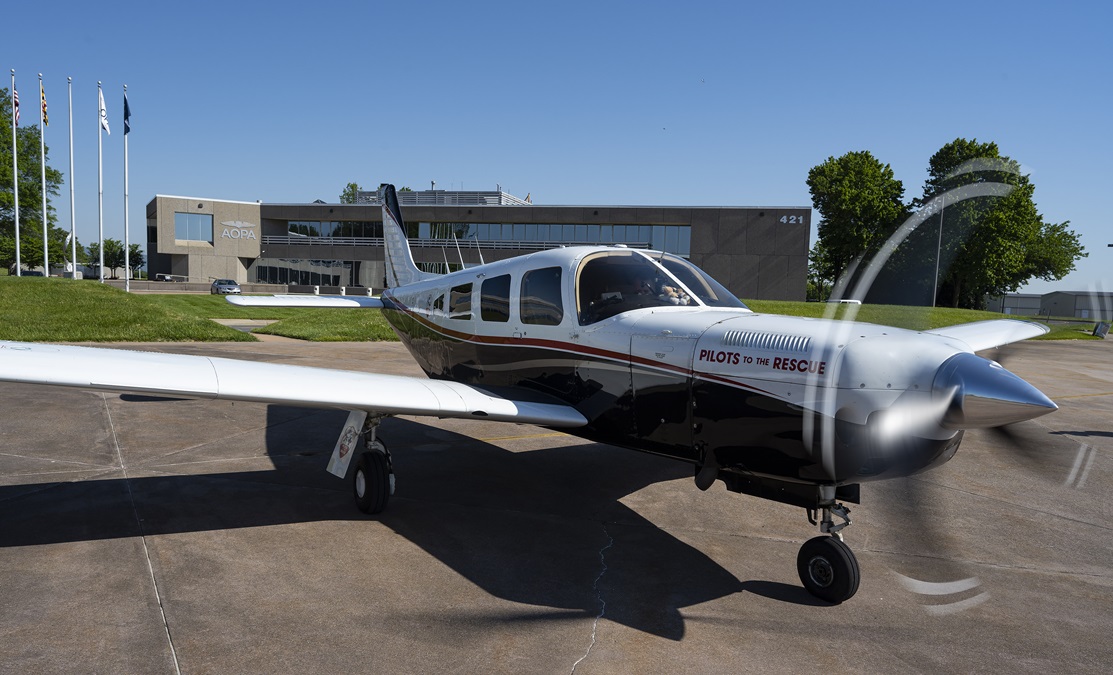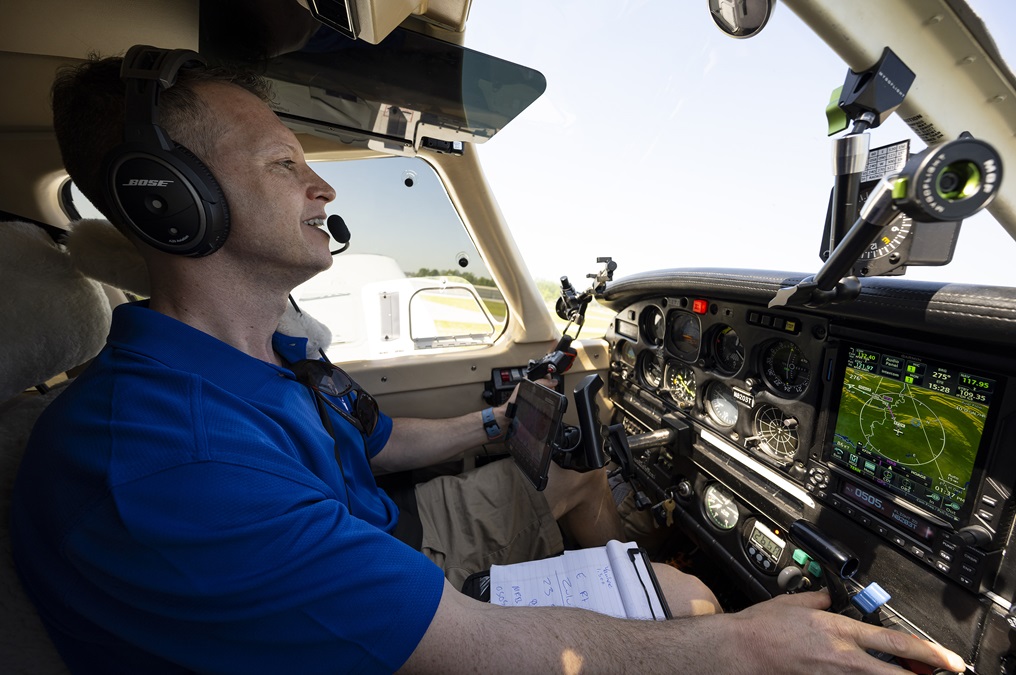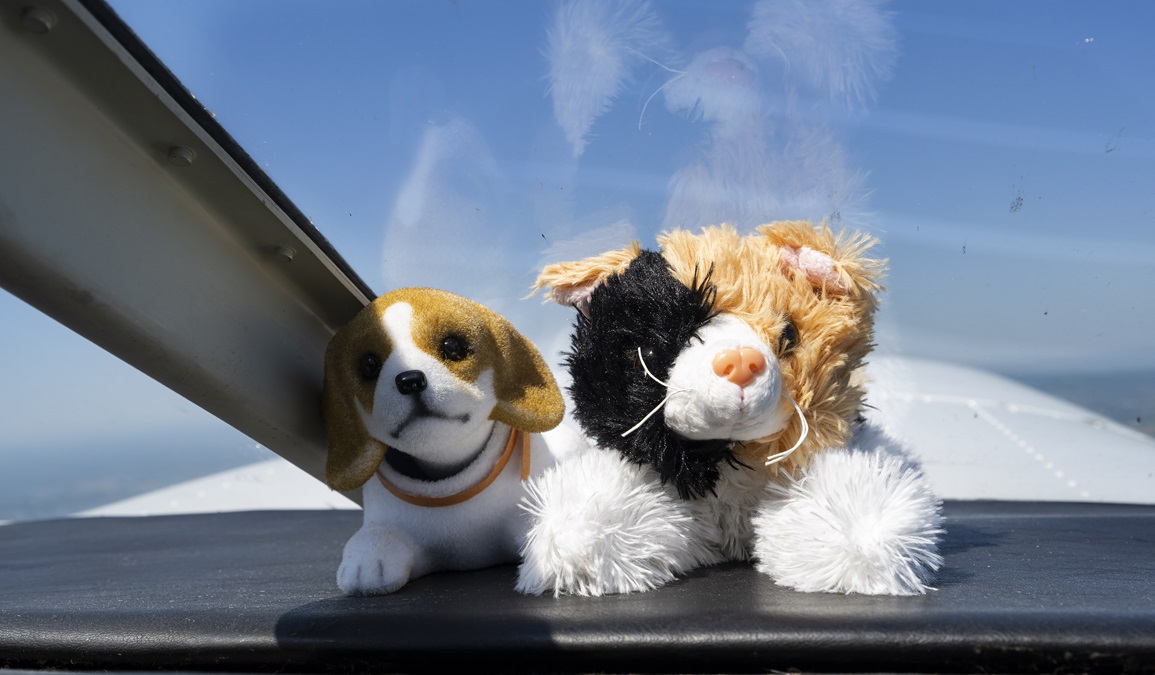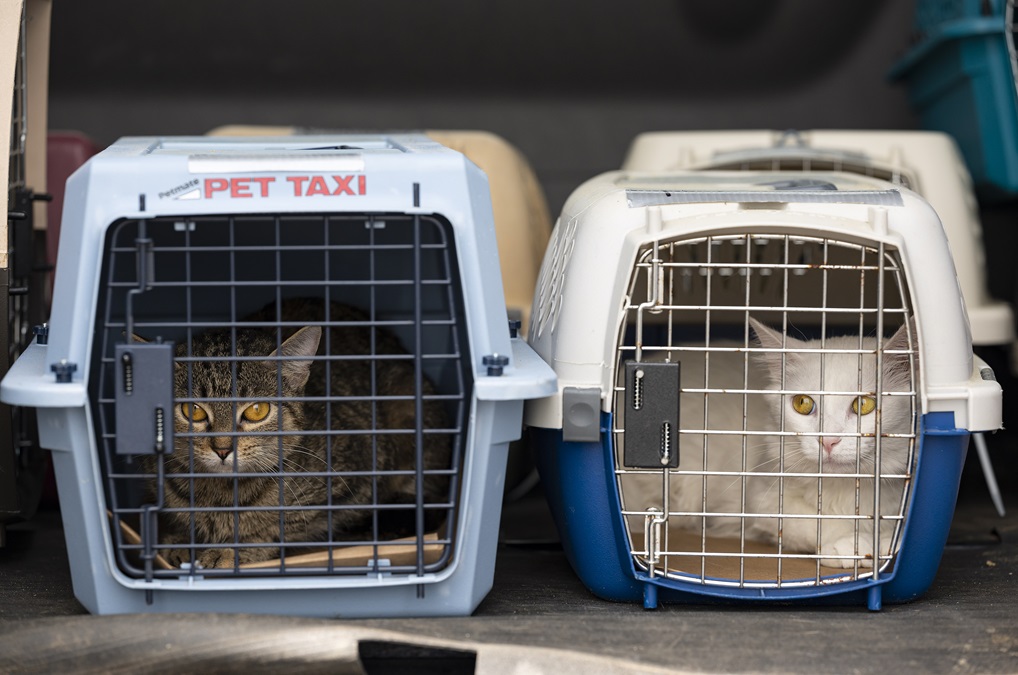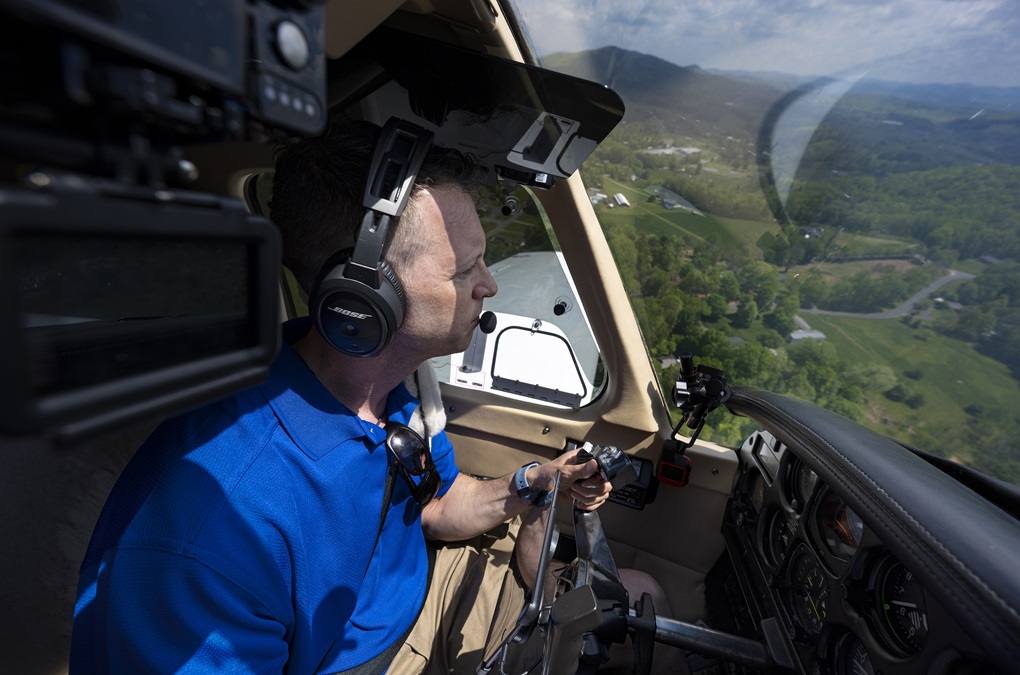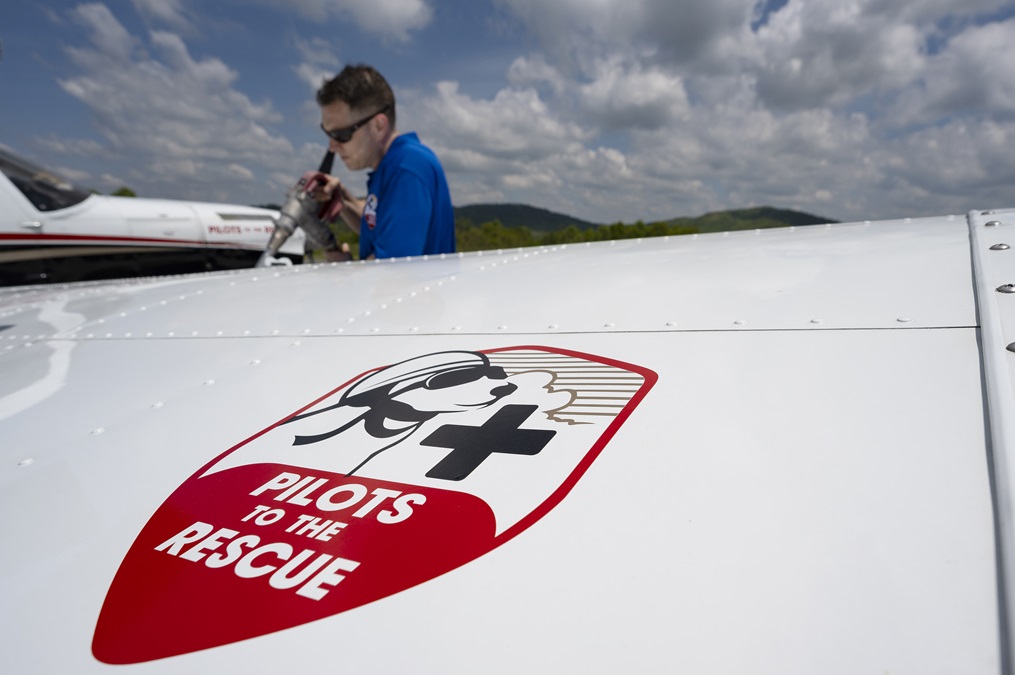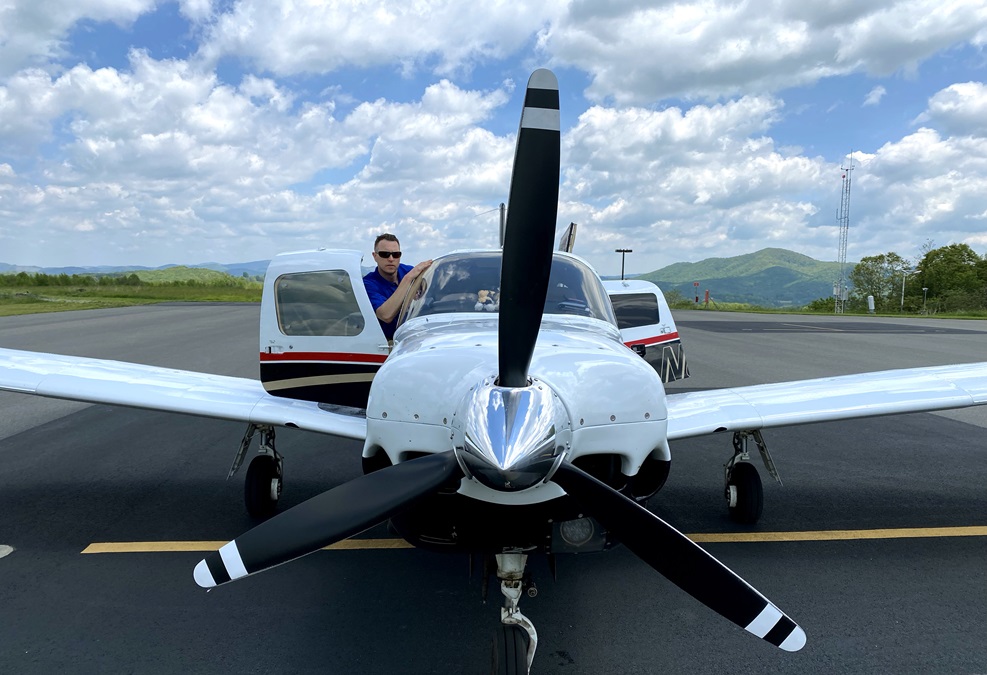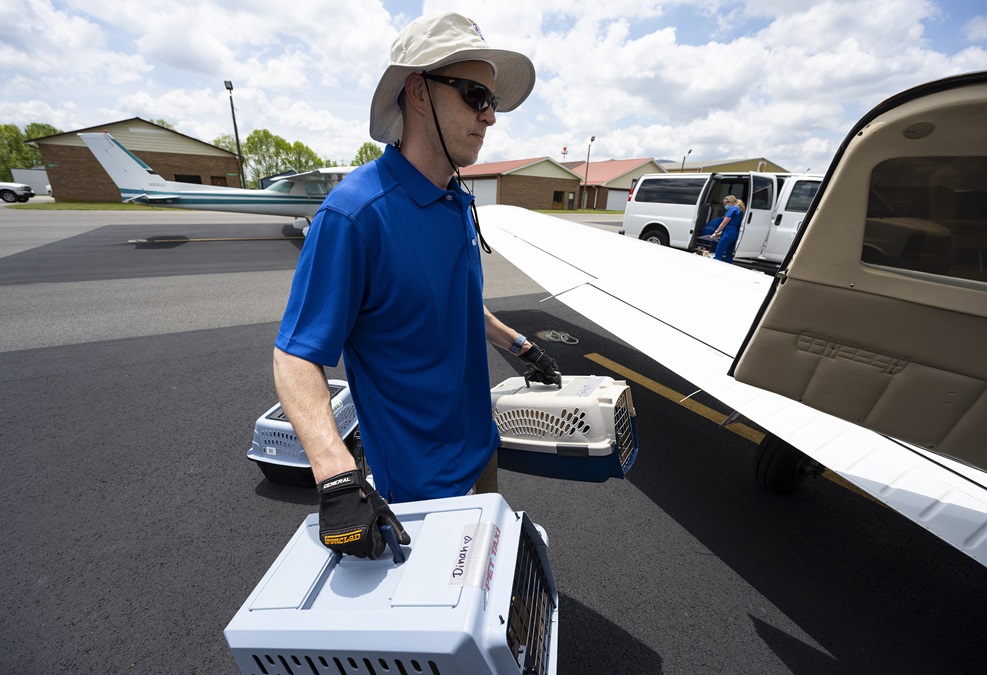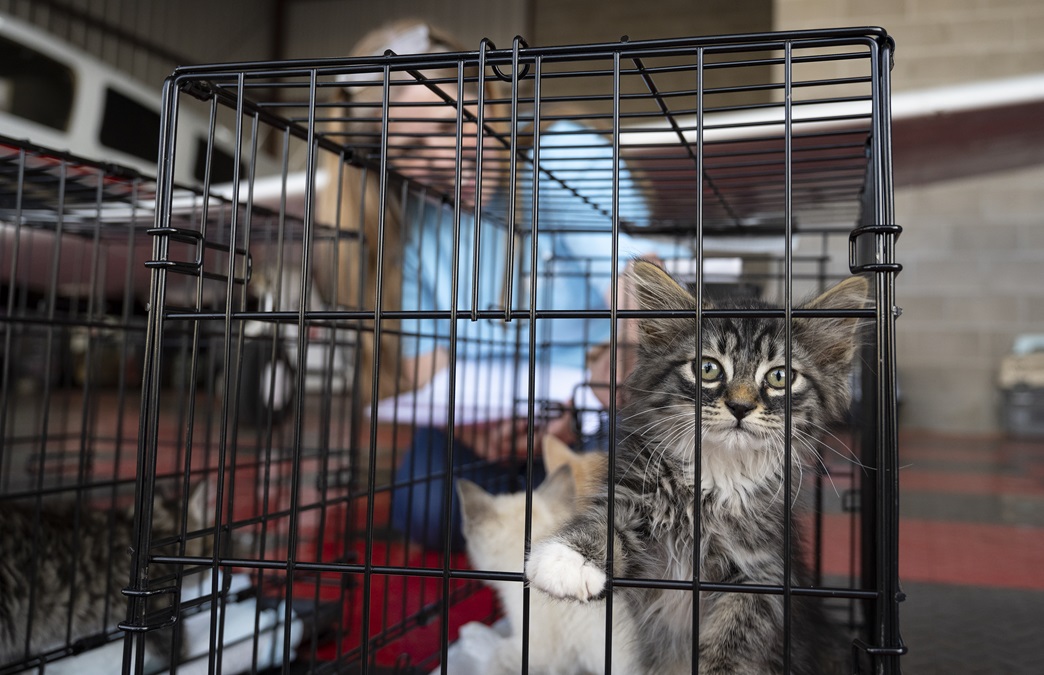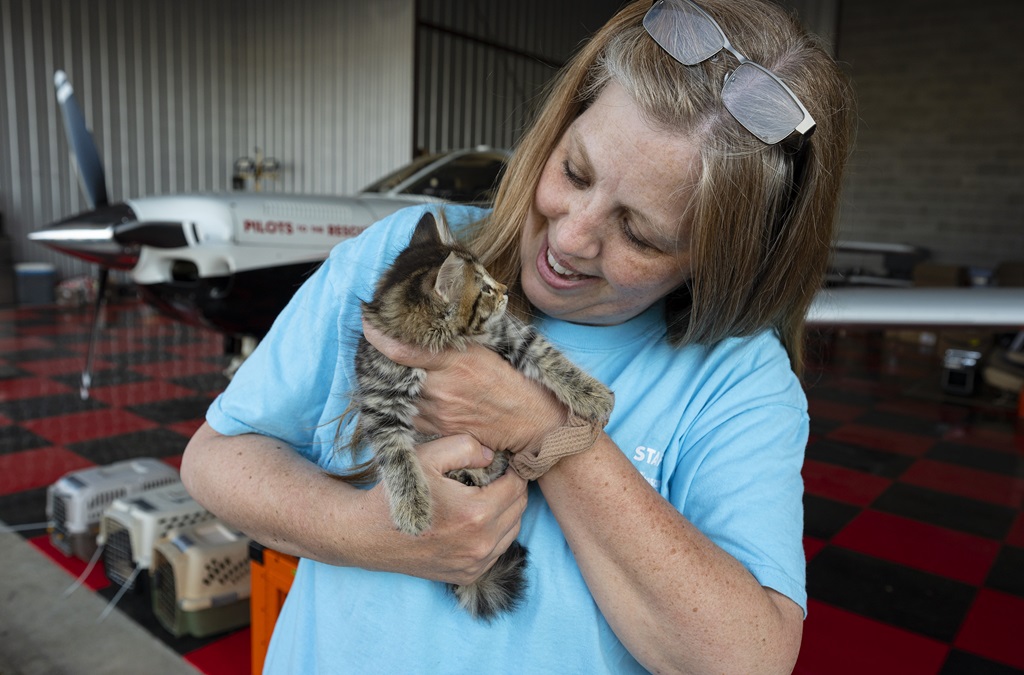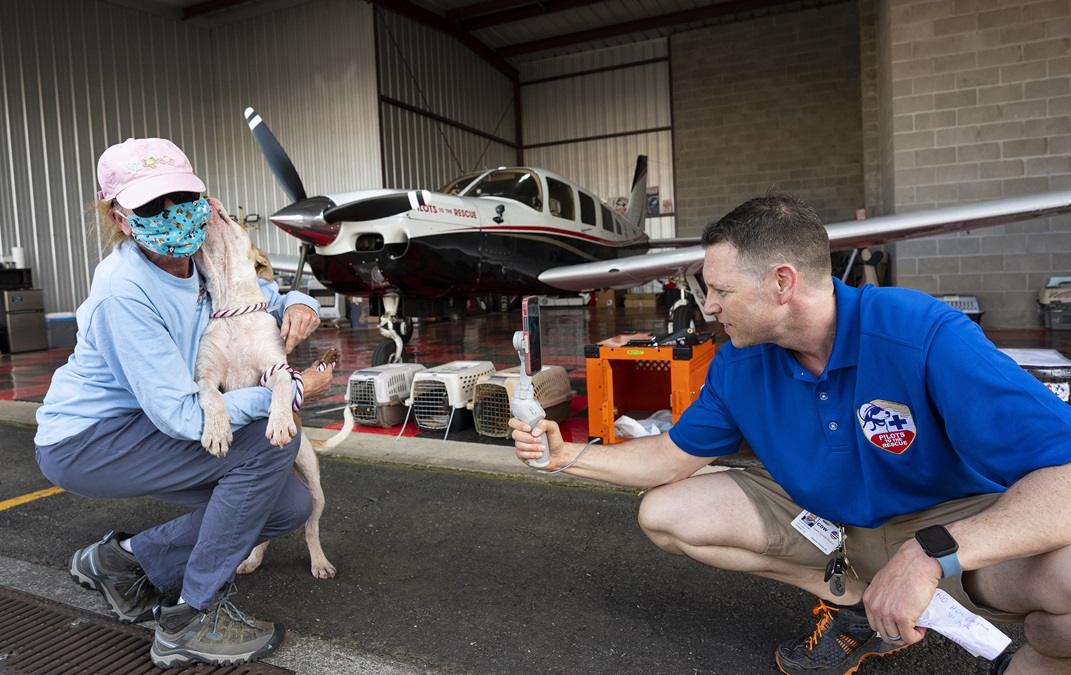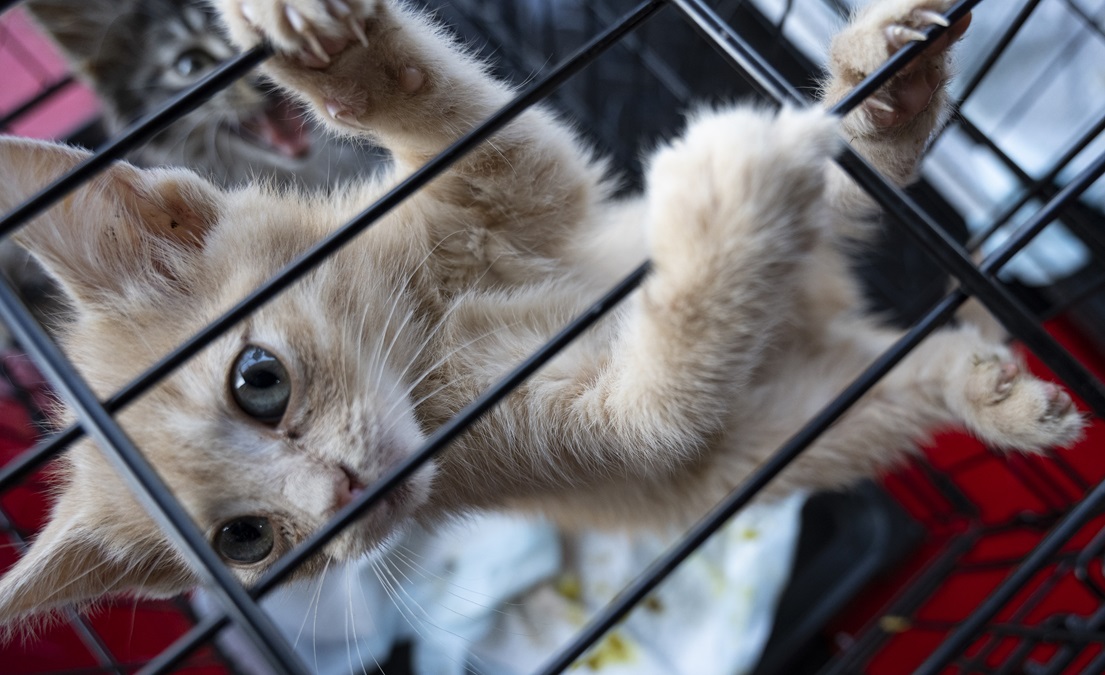‘Cheeseburger’ rescued to paradise
Pilots to the Rescue founder Michael Schneider delivers pet rescues to adoption centers
Cheeseburger pranced nervously on the Ashe County Airport ramp in North Carolina and licked animal rescue coordinator Andrea Sams goodbye as Pilots to the Rescue founder Michael Schneider refueled his 1982 Piper Turbo Saratoga SP before flying the at-risk pup and 13 cats and kittens to pet adoption centers in the Northeast where they would then head to their new homes.
Time was running out for the temporary Greenville County, South Carolina, pets because the animals weren’t adopted out locally, and the shelters were overcrowded. The American Society for the Prevention of Cruelty to Animals (ASPCA) says that approximately 6.5 million companion animals enter animal shelters nationwide and approximately 1.5 million are euthanized. The problem is more acute in the Southeast, and that’s where public benefit flying organizations including Schneider’s, Dog Is My Copilot, and Pilots N Paws often come into play. Big-hearted pilots donate their time, their aircraft, and their resources to help find future homes for the furry friends. They do it out of love, from a dedication to others, and for a sense of accomplishment.
AOPA Live Video Producer Josh Cochran and I joined Schneider to see what it was like flying a six-seat aircraft filled to the headliner with dozens of paws and wagging tails. I performed a Pilots N Paws rescue mission when I lived in Atlanta, and it was one of the most rewarding aviation experiences I’ve had. Our journey began at Frederick Municipal Airport in Maryland, a stop along the route from Schneider’s home base near New York City to North Carolina’s Blue Ridge Mountains for the pickup.
I chose—perhaps incorrectly—to accompany Schneider up front as the “co-pawlet” on the first leg so we could chat in the relatively quiet time in between acknowledging air traffic control instructions. However, that meant I was relegated to the rearmost seat for the return. More on this later.
Blue skies and puffy clouds dotted our journey while Cochran and I learned about the organization that began in 2014 and picked up steam after a $10,000 ASPCA grant in 2015.
It’s evident that Schneider, an event coordinator by trade, has found a new calling in life. When his business-to-business livelihood disappeared with the arrival of the coronavirus pandemic, Schneider began to devote more of his resources to helping others before he decided to make rescue missions his full-time pursuit. To date he has transported dogs, cats, turtles, and endangered wolves; he’s also flown people in need of medical transportation.
On this trip, every move Schneider made was designed to keep his “pawsengers’” best interests in mind. First, he determined an early morning departure time out of Caldwell, New Jersey, to afford as smooth a return flight as possible that afternoon. Then he coordinated ground transportation at the pickup point to allow for a precise pickup time with minimal waiting on a hot ramp.
Schneider, Sams, and local rescue coordinator Jennifer Barnett worked quickly to load and secure the crates of animals and to keep them as cool and as calm as possible during their first airplane flights. The “Top Dawg”—it’s printed on Schneider’s headset mic—planned an IFR altitude of 7,000 feet to combine favorable winds, cooler cabin temperatures, and minimal discomfort for the animals. “Anything above 8,000 feet hurts their ears,” he explained.
The turbocharged Saratoga easily handled the high-density-altitude takeoff from Ashe County Airport’s Runway 10 opposite an imposing 4,710-foot-tall ridge near the Mount Jefferson State Natural Area not far from the snow ski mountain towns of Boone and Banner Elk. Though the animals originated in South Carolina, the pickup was organized for North Carolina to maximize the airplane’s load-hauling characteristics and expected fuel burn.
I had a prime position to observe that some of the animals weren’t too keen about their first general aviation flight, and they soon let their queasiness be known. That’s when I realized making photos en route from a backseat vantage point really wasn’t that good of an idea. The aroma reminded me of the time my brother Martin did what most children do when they are hot, tired, and motion sick from bumping around over Georgia in their dad’s Ercoupe—without the benefit of a barf bag. Fortunately, Schneider planned for the occurrence by placing a large plastic tarp along the Piper’s floorboard. Let’s just say it came in handy and leave it at that.
The instrument-rated pilot’s aviation experience began during a skydiving jump when he found he was as inquisitive about the flying portion of his skydiving adventure as he was about the tandem jump he was about to take. “I didn’t realize I loved aviation” until that moment, he said. A discovery flight in Ohio led to flight lessons at Sporty’s Academy. “I was one of those student pilots who took a little longer. I think it took me two years and 100 hours” to earn a private pilot certificate. He has accumulated 600 hours and is pursuing a commercial pilot certificate.
Schneider said he became hooked on rescue work after he and friend Brian Orter rescued a litter of abandoned puppies in North Carolina and delivered them to loving families in the Northeast. “I did a flight with Pilots N Paws, a great public benefit organization, but I wanted to be an entrepreneur,” he explained. “I wanted to start my own thing, [because] I wanted to get into larger aircraft, and I saw starting a 501(c)(3) charity as a way to do that.”
He founded Pilots to the Rescue after encouragement from a life coaching organization that teaches members to follow through on the one thing that they’ve always wanted to do.
“This organization is no longer about me. How we grow this mission is by saving more animals, and by public benefit flying in general,” he pointed out. Pilots to the Rescue performs other flights when able. “We work with Angel Flight East quite often to do the medical flights, and we work with a great organization at Norwood Memorial Airport in Massachusetts called Above the Clouds. They do discovery flights for foster children.” He said, “scaling the operation by working with other pilots” is the organization’s goal as more opportunities arise.
“We’re actually talking to Dog is my Copilot,” the animal rescue organization in Jackson, Wyoming, founded by orthopedic surgeon Peter Rork that concentrates on rescues in the Western states. “Dr. Rork is an amazing guy and I look up to him. They’ve been around for 10 years, and he still flies that [Cessna] 206 Stationair. They are a little further ahead of us, but it would be great to coordinate with him on larger missions.” Schneider said he hopes to move up to a Cessna Caravan.
Schneider is launching a new self-service ride-sharing system that is expected to be up and running soon. Shelters or public benefit organizations can post missions and pilots can bid on them. The organization has rescued over 500 animals in 2021 with plans to rescue 1,000 before December 31. He reminded potential pilot volunteers that because of FAA rules about compensation, private pilots are required to pay for rescue flights out of their own pocket and deem what portion is deductible on their personal tax returns. It’s a good idea to bring along an assistant to help wrangle the pets if the need arises. Aviators can participate in missions by signing up at the website.
At his home airport, a welcoming crew of Justine McConnell and Lorri Caffrey from Mt. Pleasant Animal Shelter, and Laurie Fasinski from Jersey Shore Animal Center, greeted the pets with open arms and open vans after Schneider rolled the Turbo Saratoga SP into the hangar before sunset. Oohs and ahs were accompanied with hugs, gentle strokes, and furry kisses after the animals were given a moment to stretch and get tidied up.
“These animals are highly adoptable, and pilots are making a great impact,” Caffrey said. “If we can help even one animal become adopted out, it’s like they’re one of our family. The staff just cheer when they see an animal go out to a new family so quickly.”
Behind her, Schneider crouched on the hangar floor and cranked up his iPhone for an Instagram live video segment. He answered questions about the new arrivals May 19 on the eve of National Rescue Dog Day and gave a shoutout to the Bissell Pet Foundation, which helps with logistics for second chance pets.
Schneider said he believes the animals know they are being rescued. “They’re generally coming from overcrowded shelters in North Carolina, South Carolina, and sometimes Tennessee. The conditions aren’t always that great and we’re taking them out of that situation, so the animals are usually very excited.”
He said flying the at-risk animals to their “furever homes” is a noble gesture for many pilots, and it comes with the satisfaction of unselfishly sharing a love of flight with local community members. Schneider said that using a private pilot certificate “to give back is extremely rewarding, whether it’s animals or people. It really leads to sense of accomplishment as a pilot because you’re putting your experience to good use.”

